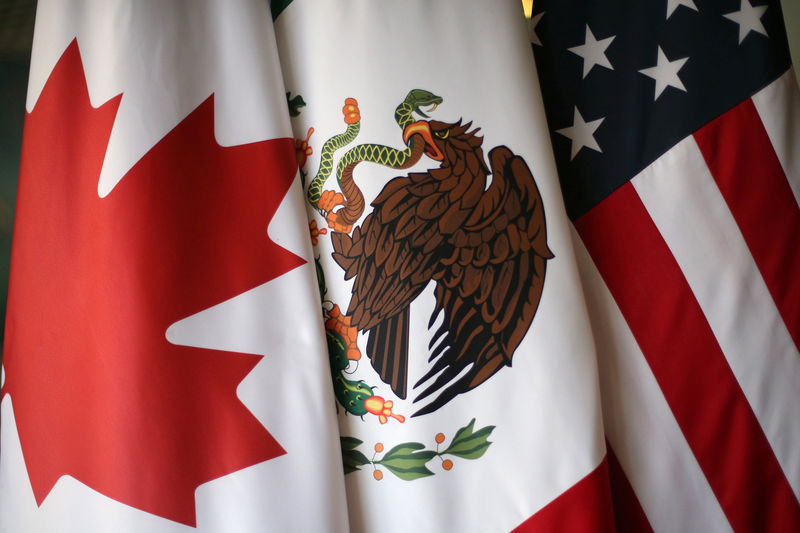(Bloomberg) -- The U.S., Mexico and Canada are heading into 2018 with no clear plan for saving the North American Free Trade Agreement.
Negotiators are poised to wrap up their latest round of talks Friday in Washington without closing any new chapters of a revamped accord. While officials made headway on issues such as telecommunications and e-commerce this week, according to people familiar with the talks, the parties haven’t finalized agreements on even minor issues since October. The lack of progress makes the goal of reaching a deal by March seem increasingly unrealistic.
“People have to be planning for what they do in a worst-case scenario,” said Robert Holleyman, a partner at Crowell & Moring who served as deputy U.S. Trade Representative under Barack Obama. “At the same time, I’ve never seen industry more involved across all sectors in making the case that the U.S. needs to come out with a Nafta that allows all three countries to declare victory.”
Only two chapters are completed out of a new deal that’s expected to include nearly 30. The three nations had already punted discussion of tough issues such as regional-content requirements for cars to qualify for Nafta’s benefits and investor-state dispute systems, where U.S. proposals have been described as unworkable by Canada and Mexico.
With a general election in Mexico and a U.S. congressional vote next year, time is running out to salvage the 23-year-old accord, which governs more than $1 trillion in trade. President Donald Trump has threatened to pull out of the deal if a new pact doesn’t favor the U.S. The next round of talks in Montreal from Jan. 23-28 is looming as a key moment.
Expectations for major breakthroughs at the past two rounds of talks were dampened by the lack of political involvement. The ministers responsible for Nafta are expected to directly participate in the discussions again at the meetings next month in Canada.
The slow pace of talks that began in August, and Trump’s brinkmanship, have fueled speculation about what would happen if the U.S. issues a six-month withdrawal notice under the agreement. Trade lawyers and economists in Washington are debating whether Congress has the authority to block the president from raising tariffs on Mexico and Canada.
“Trump can tweet that he’s withdrawn, but the tariff preferences could remain in place,” said Caroline Freund, a senior fellow at the Peterson Institute for International Economics. “It would be withdrawal on paper but not in substance.”
Withdrawal Warning
Republican lawmakers, including Senators John Cornyn and Ted Cruz, have warned Trump not to withdraw. Still, some experts doubt whether Congress could stand in Trump’s way. “History suggests it would be very challenging for Congress to muster the will and the energy to forcefully counter that,” said Holleyman.
Meanwhile, left-wing lawmakers such as Vermont Senator Bernie Sanders are pushing Trump to stick to his promise to deliver a better deal for workers.
A breakthrough next month may require a shift in the dynamic between the three nations. Mexico and Canada are reticent to put forward counter-proposals on what they see as provocative U.S. proposals. Meanwhile, U.S. negotiators are frustrated with the lack of back-and-forth exchanges on their core demands. At the last round, in Mexico City, U.S. Trade Representative Robert Lighthizer made it clear the U.S. wants changes that will “rebalance” trade on the continent, and he urged Mexico and Canada to engage in a “serious way.”
“The negotiating round in January will be the moment of truth,” said Lori Wallach, director of the Global Trade Watch program at Public Citizen, a nonprofit group that says Nafta has hurt workers.
